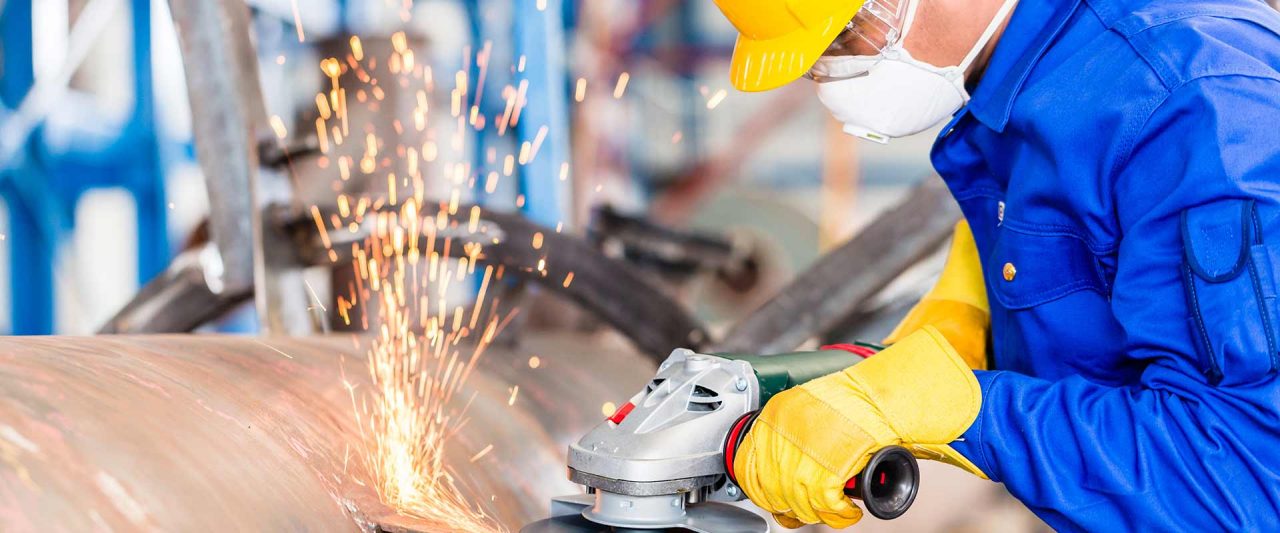Casella UK
Wolseley Rd, Kempston,Bedford MK42 7JY
+44(0)1234844100
info@casellasolutions.com

There is a debate being played out on the use of wrist or glove mounted transducers for the measurement of hand-arm vibration (HAVS) exposure. Expert consultants have pointed out that the UK HSE have said that “there is currently no wrist or glove mounted device which measures vibration suitable for use in a vibration risk assessment”. But they also concede that these devices have a part to play in the management of HAVS exposure when used as a ‘tool timer’ linked to properly measured tool vibration levels. And by proper that means to the relevant part of standards like BS EN ISO 5439 (or ANSI S2.70 in the US) using instrumentation conforming to ISO 8041 and undertaken by a competent person.
Useful guidance on the subject is provided by the HSE in publication L140, Control of Vibration at Work:2005 and in addition to a risk assessment (which may or may not involve measurements), there should be a health surveillance program. However, this might only happen once a year and there have been some examples of hefty six figure fines publicised in the health & safety press recently, for failings in this area of the UK Regulations.
And whist Casella offer a compliant HAV meter, tool timers that act as a leading indicator of potential over-exposure and allows early intervention before irreparable damage is done, gets their vote. This also applies for noise and dust, as well as vibration. For Casella’s full range of measurement solutions go to our website, here.
Yet again, social media provides a rich vein of discussion over related topics of conformance to instrument standards and calibration, the latest comment being around a new competitor in the sound level meter market. Now, competition is no bad thing. It fosters innovation and keeps suppliers on their toes but suppliers tend to cry foul when they feel there isn’t a level playing field. Sound level meters, noise dosimeters and acoustic calibrators are designed to meet IEC and ANSI instrumentation performance standards and application standards such as ISO 9612 Determination of occupational noise exposure. ‘Designed to meet’ are sometimes the weasily words used to disguise the fact that the designer intended their product to meet the standards but it doesn’t actually. This is why it has been commonplace in both Germany and France, for example, to subject instrumentation used for legal metrology e.g. enforcement, to type approval (homologation) against the claimed standards. Spain went even further with its implementation of the Measuring Instruments Directive, uniquely extending what may more familiarly be known as Weights and Measures, specifically to noise measuring instrumentation. This has not been without the law of unexpected consequences rearing its ugly head for regulations which are actually aimed at ensuring a kilo of apples gets sold or a litre of petrol is dispensed, but that’s a long story. It does mean however, that without official type approval, suppliers can be fined for selling unapproved products. In the UK compliance can be demonstrated through a UKAS approved calibration laboratory, to the verification part of the IEC sound level meter standard without the expense (for the supplier) of a full type approval which can run to thousands of measurement points and tens of thousands of pounds. The growing availability of mobile phone apps for noise measurement also throws up questions about their validity but that’s probably best left for another time.
Hardly a week goes by without an article in the health & safety press about wearable technology in the workplace, with the promise of improved wellbeing, safety and productivity. But to date the use cases have not been compelling enough for mass implementation but interest is certainly gathering pace very quickly and adoption has moved beyond the early users. You could argue that personal noise dosimeters and air sampling pumps of the type designed and manufactured by Casella, which have been around for over 40 and 50 years respectively, are amongst the original wearable technology, given that they ‘tick’ both the wearable and technology boxes. But it wasn’t until 2015 when they became Bluetooth® enabled and thereby gained the all-important connectivity, that the benefits become apparent. The productivity gain in this case is actually for the Occupational Hygienist or Safety Professional, who can check the progress of one or more instruments using a phone app from a discrete distance, without having to disturb the worker. Not knowing about a battery failure or even an employee having removed the kit for part of the sample until several hours later, could otherwise mean the prospect of having to repeat the whole measurement!
The next generation of instrumentation will probably see the integration of physical and chemical sensors as well as employee physiology & location plus communication, all monitored from a central control room. In fact, some of these combinations are already commercially available but there are a number of key innovations to be made and partnerships yet to be established to make the vision of “real-time everything on my tablet”, as one customer put it, a reality. Tricorders at the ready, beam me up Scotty!